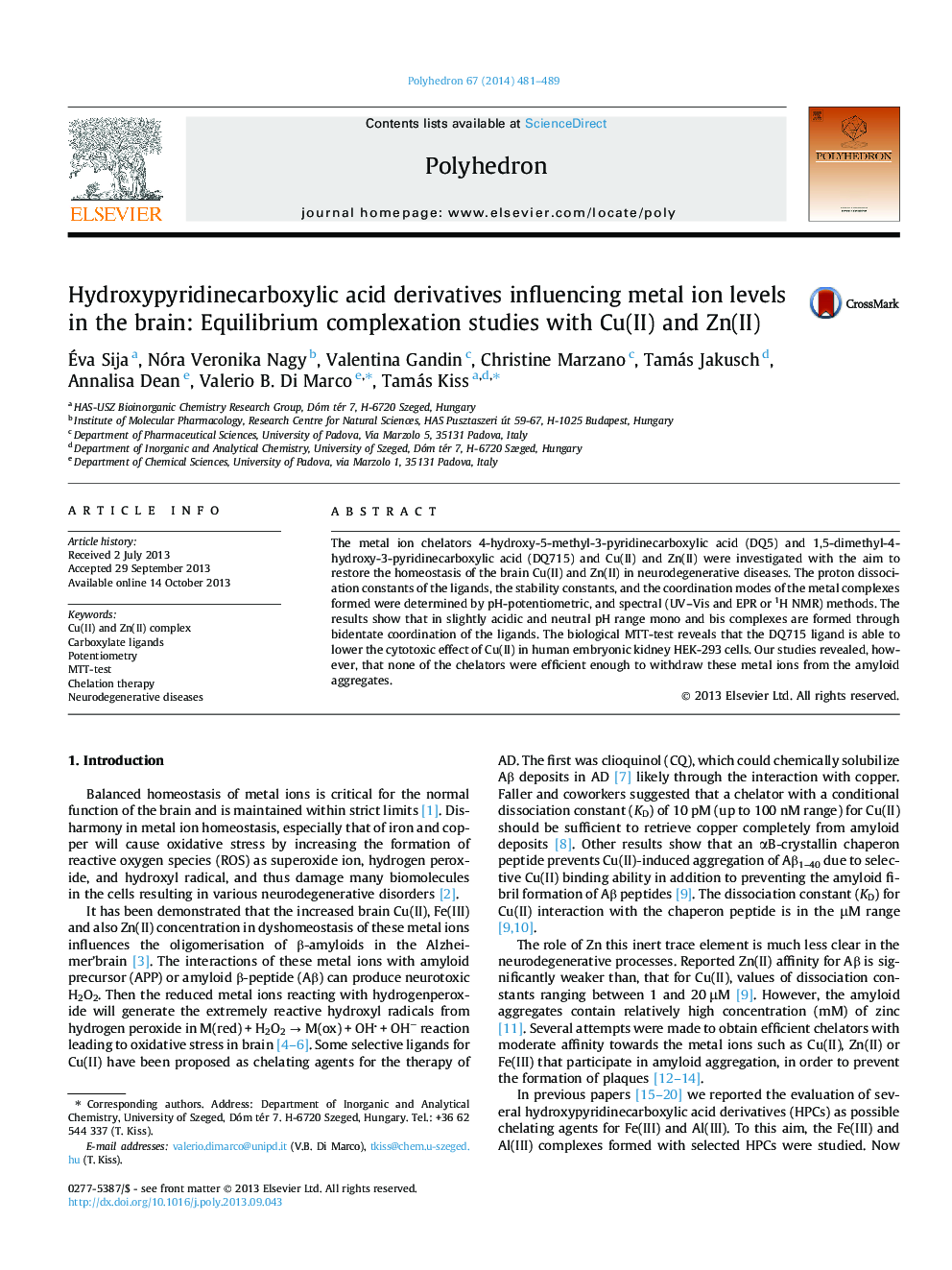| Article ID | Journal | Published Year | Pages | File Type |
|---|---|---|---|---|
| 1335506 | Polyhedron | 2014 | 9 Pages |
The metal ion chelators 4-hydroxy-5-methyl-3-pyridinecarboxylic acid (DQ5) and 1,5-dimethyl-4-hydroxy-3-pyridinecarboxylic acid (DQ715) and Cu(II) and Zn(II) were investigated with the aim to restore the homeostasis of the brain Cu(II) and Zn(II) in neurodegenerative diseases. The proton dissociation constants of the ligands, the stability constants, and the coordination modes of the metal complexes formed were determined by pH-potentiometric, and spectral (UV–Vis and EPR or 1H NMR) methods. The results show that in slightly acidic and neutral pH range mono and bis complexes are formed through bidentate coordination of the ligands. The biological MTT-test reveals that the DQ715 ligand is able to lower the cytotoxic effect of Cu(II) in human embryonic kidney HEK-293 cells. Our studies revealed, however, that none of the chelators were efficient enough to withdraw these metal ions from the amyloid aggregates.
Graphical abstractComplex formation between two hydroxypyridinecarboxylic acids and Cu(II) and Zn(II) ions has been characterised by pH-potentiometric and spectroscopic (UV–Vis, EPR and 1H NMR) methods.Figure optionsDownload full-size imageDownload as PowerPoint slide
